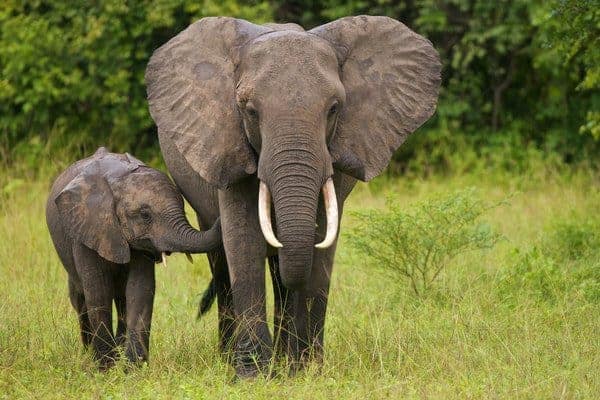While most people are aware of the threats posed by climate change, few know of just how drastic those threats are to biodiversity. According to the World Wildlife Fund (WWF), the Earth loses roughly 10,000 species every year, roughly 5,000 times higher than the natural extinction rate.
While zoos are an effective way to house endangered or threatened species, the reproductive biology of these animals is largely unexplored but is becoming increasingly important for species conservation. Two of the most pressing issues facing zoos today are space and lack of genetic diversity. Even when zoos are well-managed and internationally connected, zoo populations rarely contain large enough animal populations for long-term sustainability. Moreover, when new animals are brought in to revitalise captive population genetics, the logistics of moving animals between zoos can be extremely challenging (imagine the logistics and costs of moving an elephant or giraffe from New Zealand to New York). This is where assisted reproduction can play a significant role.
What is assisted reproduction?
Broadly speaking, assisted reproduction involves managing an animal’s reproductive cycle or manipulating gametes to achieve fertilisation and a subsequent pregnancy/live birth. Some of the most common assisted reproductive techniques in our arsenal are gamete cryopreservation, artificial insemination, and in-vitro fertilisation (IVF). Assisted reproductive techniques have become very well defined in humans that, since the birth of the world’s first IVF baby in 1979, around 8 million children have been born from assisted reproductive techniques globally. Assisted reproductive techniques have also become so commonplace in laboratory rodents and farm species that we often forget the incredible difficulty in defining the fundamentals of a novel species’ reproductive biology. Unfortunately, this is exactly the case with many endangered or threatened species. Even artificial insemination, one of the more basic assisted reproductive techniques, requires an in-depth understanding of male and female reproductive physiology before we can even think of making an attempt. Although daunting, once even simple techniques like AI or reproductive cycle management are defined, assisted reproductive techniques can be incredibly useful in supporting captive breeding efforts.
Frozen Zoos
As I mentioned earlier, the difficulty of transporting some animals between zoos (let alone continents) is extremely challenging. Sperm cryopreservation is an effective procedure for many species, where semen is collected either voluntarily or through electroejaculation and frozen without dramatically affecting sperm viability. Similarly, even cells from wild individuals can be collected, frozen, and used in captive breeding programs. Cells frozen correctly can (in theory) remain viable forever and be shipped around the world far more cheaply and simply compared to shipping an entire animal. Several institutes around Australia, including the Taronga Conservation Society and Monash University, have adopted this idea and have established the futuristic concept of a ‘Frozen zoo.’ Frozen zoos store cells from endangered animals and plants in liquid nitrogen until they’re needed for future genetic reintroduction programs into captive or wild populations through techniques such as artificial insemination or IVF.
I think it needs to be clearly stated that assisted reproductive techniques never intend to (or I think ever will) replace captive breeding. Assisted reproductive techniques are tools that scientists, conservationists, and zoo staff can use to more effectively increase captive animal numbers without replacing traditional breeding methods.
Have frozen zoos and assisted reproductive techniques been useful before?
In practice, assisted reproductive techniques are rarely used in captive settings due to their technical complexity and perceived costs. However, assisted reproduction continues to make headlines in scientific literature and the media, including artificial insemination in giant pandas and jaguars, cryopreservation in coral and fish species, and, most recently, the cloning of black-footed ferrets from cells frozen over 30 years ago. While it may seem drastic to start cloning rhinos or freezing sperm from lions, climate change poses incredible threats to species biodiversity, which we are doing a terrible job in mitigating. The Earth is losing roughly 10 million hectares of forest every year, and, as a result, animal populations are becoming increasingly fragmented and isolated, limiting gene-flow between populations. By not having enough genetic diversity between populations, a species can suffer from inbreeding depression: the reduced biological ‘fitness’ of a species and their ability to reproduce and survive in the wild. Reliable techniques for preserving and transporting species genetics between captive settings (or from the wild to captive settings) enable better management of genetic diversity while increasing that species’ biological fitness.
So, what does the future of assisted reproduction look like?
While assisted reproductive techniques have clear immediate and future benefits to species conservation, their use is unfortunately not up to the conservationists and scientists but up to funding bodies and political big wigs.
The importance of assisted reproductive techniques in the future of species conservation cannot be understated, and researchers continue to build the case for assisted reproductive techniques as reliable, effective tools for the protection of biodiversity. Conservationists and assisted reproductive biologists have chosen a difficult career, often restricted by funding issues and a pervasive misunderstanding of the importance of biodiversity in the general population. Although everybody loves the trailblazing, revolutionary discoveries, or achievements in science, these discoveries are only possible after decades of fundamental research. Without the proper funding or public interest in biodiversity, species conservation will remain an incredibly tough, arduous field. That being said, although progress may seem slow, if we continue to fight the uphill battle against climate change, we will be glad we invested in assisted reproduction science when we had the chance.
Originally published by Bolded Science @ https://www.boldedscience.com/blog/the-power-of-assisted-reproduction


